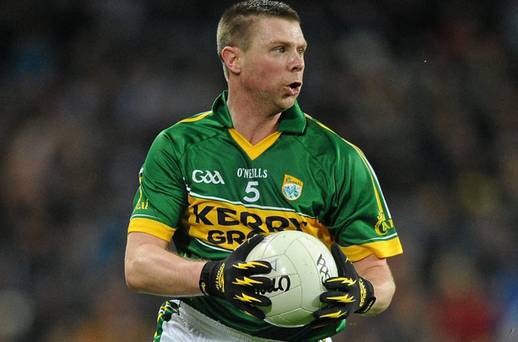The White Heat: My Autobiography
by Tomás Ó Sé (Gill & Macmillan 2015)
The narrative in this autobiography is simple and direct, the way Tomás played his football: An Módh Díreach, as he himself would put it. Another refreshing aspect of it is the paucity of expletives. Notoriously his uncle Páidí’s autobiography was vitiated by an overload of these. Responsibility for this, is appropriately left at the door of the journalist who assisted Páidí and would be expected to be aware of the difference between expletives verbally expressed in a dressing-room and those made permanent on the printed page.
Tomás Ó Sé was born in the Kerry Gaeltacht on June 21, 1978. Educated locally, he attended Mary Immaculate Teacher Training College in Limerick, where he qualified in 2000. He secured an appointment in Gaelscoil de hÍde in Fermoy and settled in Cork city.
Tomás retired from the Kerry Senior Football Panel in 2013 at the age of 35. Prior to that from his earliest years football was a major part of his life. He was a constant on the various teams fielded by his local club – An Gaeltacht – and went on to represent his county at minor, under 21 and senior football level.
A member of many successful teams he lined out with the Kerry Senior Football team on 88 occasions and won three National League and five All-Ireland medals, as well as five All-Star awards.
Tomás commends and details the skills of those who managed the teams on which he played: Páidí Ó Sé, Jack O’Connor, Pat O’Shea and Eamonn Fitzmaurice. He describes the distinctive contribution each of them made in their preparation of teams. He records the surprise he felt when the Cork footballers and hurlers went on strike against their County Board and is adamant that would not occur in Kerry, such is the attention paid to the well-being of the county’s teams.
He provides a short list of the outstanding Kerry footballers during his time on the county team and singles out Colm Cooper as in a class apart.
Tomás does not confine his list of outstanding footballers to his teammates but adds a long list of players from other counties and here reserves his greatest plaudits for Peter Canavan. His sporting heroes, apart from Gaelic footballers and hurlers, were Roy Keane, Brian O’Driscoll, Ronan O’Gara and Shane Lowry.
Difficulty
Tomás discusses a number of issues topical in the GAA world. There is the difficulty to complete Leagues and Championships in counties, when the county team continues to the later stages of the All-Ireland Championship. More importantly he highlights the ‘wear and tear’ injuries suffered by young players, owing to the demands on them by their club teams, county under-age teams, college teams and county senior teams.
He suggests a better streamlining of fixtures but acknowledges that it will not be easy to find a solution to this problem.
Tomás is ambiguous on the most pressing issue in the GAA at present – ‘Pay for Play’. While he is in favour of players receiving emoluments, he opposes the professionalisation of Gaelic games.
His basic argument is that this would undermine the ‘volunteer’ environment and spirit fundamental to the success and even survival of the 2,000 or more small parish clubs throughout the country.
On a personal note, for more than 10 years I had the pleasure of providing Mass for Kerry football teams in their various hotels before they went into Croke Park for their matches. On these occasions I found Tomás Ó Sé one of the most likeable of a very likeable bunch of footballers who, as is clear from this book, gave of their very heart for their county and their sport.


 Tomás Ó Sé
Tomás Ó Sé 